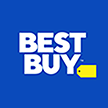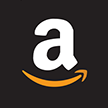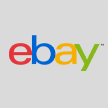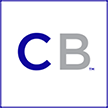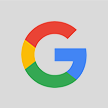
You’ve been there before.
We all have.
After experiencing a successful blogging campaign that lead to an increased customer base, audience engagement, and conversions, you reach a plateau in which your content is no longer generating excitement.
How could this be?
The answer is already in front of you.
Your successful blogging campaign was a successful blogging campaign.
But there’s so much more you could be offering your audience.
The fact of the matter is, there are hundreds of other specialists in your niche, each vying for the attention of the same audience. By sticking to just one medium, you’re not doing anything to stand out from the herd.
Generating leads is a repeatable, scalable process that uses a broad spectrum of content types. Creating different content will allow you to dive deeper into specific topics and areas of interest, and present the information in ways that simply aren’t possible through just blogging.
The most important thing to keep in mind is you should never just create new content just for the sake of creating new content. Check out online forums and blogs where your target audience is known to frequent, and see what they’re saying. You can gain a ton of insight about their needs and desires if you pay close enough attention.
Once you know what information your target audience is looking for, you can figure out the optimal type of content to create to deliver it with.
1. Ebooks
If you want to position yourself as an expert in a specific industry, writing an ebook might be the best way to get started.
When people see you’ve written an ebook, they’re more likely to trust you. “Having a book” just gives you so much more credibility than “having a blog.” In fact, your ebook might be just what your audience needs to supplement the information they currently receive from your blog.
By filling your ebook with valuable information, you’ll show you have much more than just a passing knowledge of the topic at hand. When visiting your blog, your readers might not have much time and prefer to skim and scan your content. However, when they sit down to read your ebook, they’ll likely set aside a good chunk of time to do so, giving you the opportunity to dive deeper into topics you may have only glanced over in blog posts.
Writing an ebook will also show that you are truly dedicated to your niche – especially if you offer the book for cheap (or even free). When you offer an ebook and ask for little to nothing in return, your readers will know your main goal is not to make an easy buck, but to help push your industry forward as best you can.
Creating an ebook can be as simple as curating specific blog posts of your own collection and putting them into a single PDF file.
However, while you can certainly use your own past blog posts as a springboard for chapters in an ebook, you should do more than just copy them word for word. Offer something new in your ebook – diagrams, quotes from experts, and links to further reading, to name a few examples. If your ebook doesn’t differ at all from your blog, then what’s the point of creating it?
Check out Salesforce Marketing Cloud’s ebook, SEO Experts Reveal the Truth About Marketing. With a quick look through, you’ll see all that we’ve mentioned and more. Most importantly, take notice of how much information is presented: nine experts were given free range to discuss certain aspects of SEO, and, because the creator of the ebook can safely assume his audience will dedicate more time to reading it than they would a blog post, he could print everything the experts had to say.
2. Email Series
An email series is a great way to land conversions from those members of your audience who are on the fence about whether or not to become a loyal customer of yours.
Not to be confused with an email subscription, an email series is a finite number of messages sent out to those who sign up for it.
These emails have a very introductory feel to them. You’ll tell your audience what your service is all about, how they can get started, and how they can move forward.
It’s a fine line between being helpful and being too advertorial though. Through your email series, you’ll give away just enough info to get your readers interested, but not enough so that they have no use for your paid service. But you also don’t want to constantly bombard them with “Click here to buy!” links that will ultimately turn them off.
In fact, you might want to focus on using an email series to point your audience toward even more free content from your site. Again, the more you give away, the more your audience will trust that you’re not just out for money.
Of course, you do deserve to be paid for the more in-depth lessons you have to teach. Once your audience has gotten all the free information you offer, you need them to know that there’s even more on the other side of the paywall. If they’ve gobbled up each of your email series messages, there is a much larger chance that they’ll want to dive into the paid content as soon as possible.
Caitlin Pyle of Proofread Anywhere offers an awesome 7-Day email series for prospective customers of her paid services. These introductory emails introduce Caitlin and the story of how she became a professional proofreader, assess your ability to proofread, discuss the basics of finding clients, and more. Through these emails, Caitlin also helps alleviate any fears that her course is a scam: She makes it incredibly clear that, as long as you’re willing to do the work, you’ll succeed just as she has.
3. Podcasts
Although the Internet makes it incredibly easy to have your “voice” heard all over the world, we usually communicate on the Web via written word.
By creating a podcast, your actual voice can be heard by anyone with an Internet connection.
Although the information you convey in a podcast will likely be similar to its accompanying blog post, the podcast has a much more authentic feel to it. Because your audience can hear your voice, they can hear how excited and enthusiastic you are about the topic at hand.
Podcasts are also much more candid, as well. When you publish a blog, you don’t do so until it’s polished, proofread, and made as perfect as you could possibly make it. A podcast, on the other hand, will be full of human moments, such as pauses while trying to figure out the right way to explain something or if you completely forgot what you were going to say. Sometimes, your audience needs to know that you’re a person, too.
Speaking of your audience’s needs, podcasts are tailored to the on-the-go listener. Since they can passively listen to your podcasts, they can do so while exercising, during their commute, or while making dinner. Unlike reading text posts, which require a reader’s utmost attention, podcasts can be listened to at various times throughout a person’s day, making them incredibly accessible.
Professional B2B copywriter Ed Gandia hosts a podcast entitled High-Income Business Writing, which focuses on the various aspects of the B2B freelance writer’s career from novice to professional. He often invites other professionals onto the show to discuss their experiences as well.
Though the show does have structure in that he has a list of prepared points and questions for his guests, the podcast format allows for Gandia and his guest to spend more time focused on a specific topic if they have a lot to say about it. By operating this way, Gandia shows his audience that he’s not just creating a podcast for exposure – he’s doing it because he is passionate about the B2B writing industry.
4. White Papers
White papers are an academic writer’s dream. These pieces are usually anywhere from six to eight pages in length, and are highly authoritative and persuasive.
The main goal of a white paper is to make the reader aware of a specific problem or pain point within your industry, as well as possible solutions to the problem.
Of course, your product or service will be part of that solution, but a white paper’s job isn’t to serve as an advertisement. Instead, a white paper will make it clear that there absolutely is a need for a specific product or service, and it just so happens that your company provides it.
White papers are full of statistics, surveys, and anecdotal evidence to prove there is a problem, and ultimately provide rationale for the creation of a product to solve this problem.
For example, SMART Technology has released many white papers which discuss topics relating to education such as teacher burnout, 1:1 learning, student learning outcomes, and more. When interactive whiteboards started to become more and more prevalent in the classroom, many people saw them simply as glorified chalkboards. These explanatory papers opened the public’s eyes to the problems regarding engagement that teachers face when using a regular chalkboard, and how implementing an interactive whiteboard could alleviate these issues.
Again, it’s important to notice the main point of a white paper is to educate the reader and persuade him to take action. While the underlying goal of a white paper is to generate leads for a specific brand’s services, it’s important to ensure the reader never once believes he’s being sold something. Instead, the white paper should simply lead him to understand how his life will improve if he were to purchase a specific product or service.
5. Ultimate Guides
An ultimate guide is just that: the absolute pinnacle of educational and informational content on a specific topic.
These guides are usually tens of thousands of words in length, and are divided into different sections.
When creating an ultimate guide, you leave no stone unturned. If you write a sentence and think “I wonder if my reader will understand what I mean,” dive deeper. Keep zooming in until you’ve completely exhausted your knowledge on a topic – no matter how menial it may seem. Keep your audience in mind at all times. They’re reading your guide because they’re new to the industry, and likely need as much explanation as possible.
Ultimate guides offer step-by-step instructions for going about a certain task. And, again, you should always err on the side of specificity. Use diagrams, screenshots, and video links when necessary to avoid any confusion on the part of your reader. They came to you to understand everything there is to know about a topic; don’t disappoint them.
Neil Patel is perhaps one of the most popular ultimate guide creators. His Definitive Guide to Growth Hacking is ten chapters of in-depth analysis and explanation of everything having to do with growth hacking. He explains what it is, who does it, how to go about getting started, and growth hacking best practices all in one spot for your educational needs.
If you can create an equivalent to Patel’s definitive guides for your own industry, you’ll be considered a master of your craft in no time/
Conclusion
If you’re just getting your business off the ground, it’s understandable if you have focused solely on one way to generate leads. But once your audience becomes tired of the same old content, it’s up to you to change things up.
As your customer base continues to grow, you’ll need to scale up your content creation in order to continue gaining a wider reach.
When creating content, keep in mind not only your current audience members, but your potential audience members. Know what they’re looking for, and know how to give it to them in a way that places you in the limelight above your competitors.
Above all else, never become complacent in your content creation. The moment you let your guard down, someone else will swoop in and take potential business away from you.
As long as you keep churning out quality content in a variety of formats, people will come to you to solve their problems.
Author: Tony Messer
Courtesy: blog.linkody.com








